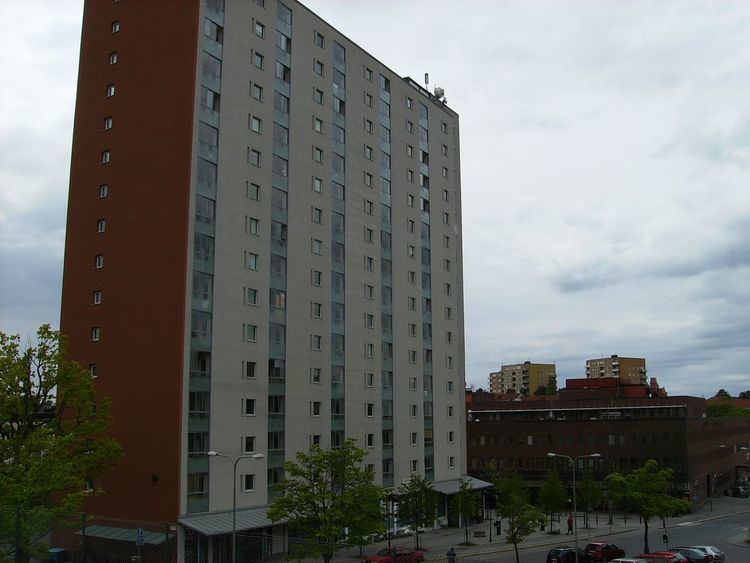 | ||
The Million Programme (Swedish: Miljonprogrammet) is the common name for an ambitious public housing programme implemented in Sweden between 1965 and 1974 by the governing Swedish Social Democratic Party to make sure everyone could have a home at a reasonable price. The aim was to construct a million new dwellings during the programme's ten-year period. At the time, the Million Programme was the most ambitious building programme in the world to build one million new homes in a nation with a population of eight million. At the same time, a large proportion of the older unmodernised housing stock was demolished.
Contents
The housing shortage in Sweden before the start of the programme was a major political and social issue in Sweden. Between 1860 and 1960, Sweden had transformed from an agrarian nation to a highly industrialized nation, which led to a large urbanization trend. The population in the countryside moved in large numbers to towns after 1945. This urbanization following World War II was also encouraged by the authorities and governing establishment. After the war, as Swedish industry was unharmed, cities needed workers to produce the amount of goods demanded by the rest of war-destroyed Europe. The major cities of Sweden had in many cases had their last building boom in the late-19th century and were, by 1950, much too small to accommodate the rural population then flooding into the cities.
The increasing standard of living led to demands to dramatically decrease the population density and to abolish the old Lort-Sverige (Dirt Sweden). This was made possible because of the outstanding growth Sweden had during the record years (rekordåren) in the 1950s and 1960s which led to a flood of income to the national treasury. This money was used to implement social reforms. The social democratic government implemented reforms to ensure the availability of land, such as new land acquisition rules for local authorities, as long as the landowner was planning to sell it to a private buyer. Another new law said that a municipality could build homes outside its border ("Lex Bollmora"), because rural municipalities near Stockholm could not afford building so much.
Over the lifespan of the program, 1,006,000 new dwellings were built. For the houses designed for the lowest-income group, the government would bear 66% of the initial costs and this would be repaid by the customers and residents in a 30-year period. For other categories such as students and blue collar workers and immigrants, the Government provided subsidies and incentives to building companies in order to start construction. The net result was an increase in Sweden’s housing stock of 650,000 new apartments and houses, financed through property tax, with a general rise in housing quality.
Design
The new Million Programme residential areas were greatly inspired by early suburban neighbourhoods such as Vällingby and Årsta. One of the main aims behind the planning of these residential areas was to create "good democratic citizens". The means of achieving this were to build at high quality with a good range of services including schools, nurseries, churches, public spaces, libraries, and meeting places for different groups of households. A principal aim was to mix and integrate different groups of households through the spatial mixing of tenures. Most of the apartments were of the "standard three room apartment" type (Swedish: normaltrea) of 75 m² (810 sq ft), planned for a model family of two adults and two children. The second type of apartments were the "student blocks" or "student suburbs" that were planned and built in the cities having large universities, like Stockholm, Lund, Uppsala, Linköping and Umeå. Almost 150,000 new "student apartments" were built in specially designated "student suburbs" in order to meet the needs of the rapidly increasing university student population. These student apartments were usually 1-bedroom 1-bathroom and common kitchen type dorms that were clustered together in a large suburb or neighborhood. The ownership of the apartments were leased out to "housing companies" like Heimstaden AB who rented it out at below market rates, the rents being subsidized by the government.
The Million Programme constructed a mix of housing units with some concentrated tower blocks but with the majority of the housing stock consisting of apartment buildings with three or fewer floors, terraced houses ("low houses") and one-family houses.
Districts
Million Programme districts include:
